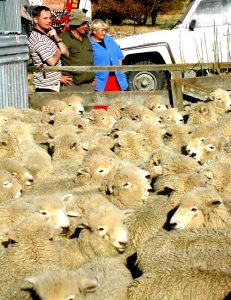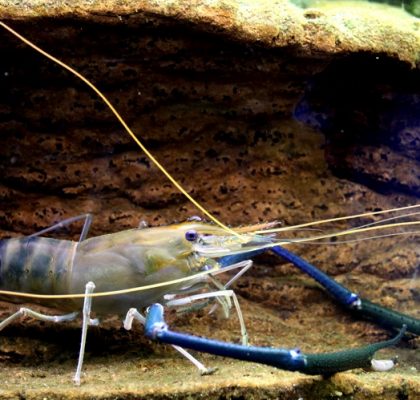- Auckland ~ A beginning to New Zealand travel.
- Franz Josef Glacier is a Cool Place for a Quick Look or Guided Expedition.
- Cruise Between New Zealand’s North and South Islands.
- Abel Tasman National Park, New Zealand
- Waitomo, New Zealand’s must see attraction … Glowworms
- Sheep Station Story – from our New Zealand travel journal
- Cape Foulwind to Pancake Rocks. Take your camera!
- Spectacular Natural Beauty in Milford Sound
- Out To The End of New Zealand’s Farewell Spit
- Keeping On The Move Around Queenstown
- Stewart Island ~ the gateway to Ulva Island
- River, Creeks, Waterfalls and Lakes From Haast to Wanaka
- Seeing & Doing at Mount Bruce, Napier & Taupo
- Dunedin’s Charms Are Tempting Reasons to Stay Longer
Sheep Station South of Queenstown
A page of encouragement from our travel journal.
South of Queenstown, New Zealand
DISCLAIMER: This is not a tourist destination.
The following is a page from our travel journal – a page which we hope will encourage you to seek out your own special travel moments. It is through our efforts to become acquainted with those who live in the places to which we travel that introduce us to many of our most memorable experiences. Beyond the going and the doing, the sights and the food, it is interactions with people which you may well count among your most cherished memories … these are the treasured reasons why we love to travel.
LORNE PEAK SHEEP STATION
South of Queenstown heading south on Highway 6, we saw a small handmade sign beside the road which read ‘AUCTION’. To our left were paddocks of sheep. We noted a few cars and several people. It would be fun to watch a local livestock auction, so Terry turned the car around. Upon parking we asked if we might watch the auction and were informed it was over … but as it turned out our time there wasn’t.
 Philip and Jenny are owners in Lorne Peak Station. They run roughly 22,000 sheep and about 1200 head of cattle on 30,000 plus acres. Most of the land is crown leased with an option to renew.
Philip and Jenny are owners in Lorne Peak Station. They run roughly 22,000 sheep and about 1200 head of cattle on 30,000 plus acres. Most of the land is crown leased with an option to renew.
Philip’s father started the farm and passed it to his two sons. Philip was in charge of animals while his brother took care of anything machinery related. The partnership worked well. Philip’s brother passed away and helping him with the auction today were his two nephews who inherited their father’s interest in the family trust. The nephews, like their father, look after the machinery but Philip wasn’t sure they would continue with farming.
Philip and Jenny, like any parents, want the best for their children and with that thought in mind they have insisted if any of their offspring want to make the farm their life’s work, they must first learn, and practice, a trade unrelated to the farm. Their oldest child Matthew has a Master’s degree and was employed with Price-Waterhouse in Auckland as an accountant, but what he really wanted to do was work the farm with his father. Having accomplished what his parents insisted on, Matthew quit Price-Waterhouse and is now fully employed on the family farm.
Their second child, a daughter, completed her teacher’s training, while the youngest child, at the time this writing, was still pursuing her education.
With 30,000 acres Lorne Peak fertilizes by airplane, however, insurance for aircraft has escalated to the point where this approach to growing feed stock is becoming increasingly difficult to justify. They ‘muster’ (check on or gather-up sheep) by 4 wheel ATV and dogs. When Philip and his brother were young they did it with horses and dogs but it is now too costly to use this much slower approach to get the job done.
Each month the lambs are ‘drenched’ (given worm medicine) and once each year the ewes are also drenched, submerged in liquid lice inhibitor and ‘crutched’ (the wool removed from their backend and around their udder to make lambing easier).
Ram lambs are not castrated but their testicles are popped up into the body cavity … they have found by doing so the lambs grow out leaner – they don’t want fatty lambs in New Zealand. Lamb tails are cut short and then seared to prevent infection.
To identify their animals, Lorne Peak attaches a plastic tag (embossed with the name ‘Lorne Peak’) in the left ear. The color of the tag indicates the year of birth. The right ear is marked with a “V” notch to indicate one sex while the left ear is notched in a similar fashion for the other sex. With these marks, animal sorting is fast and easy through swing gates at the end of narrow chutes.
We had noticed fields of rich green leaves throughout the country. These fields looked like they were growing a crop … not just pasture. Philip explained they were crops of swedes. A swede is like a turnip but in actuality is a cross between a cabbage and a turnip. Farmers generally don’t harvest swedes; they either turn the sheep into the field to forage or till them up before letting the sheep in to winter feed. As well, many farmers maintain hay fields. The cut silage is stored in round plastic bales and used as needed during unusually cold winters or summer drought.
Lorne Peak raises their animals in the dry region of the South Island. “Under these conditions we prefer single lambs” (one lamb per ewe), Philip explained.
“So you wouldn’t want to be raising Finn sheep?” asked Terry.
“Oh gosh no,” exclaimed Phillip thinking about the breed which is known for birthing multiple lambs, “the last thing we want is a second lamb.”
There is no need to barn the animals … there are no predators (other than the two legged kind) and the weather is mild enough that the sheep can winter and lamb outside.
“Perendales (a cross between Romney and Cheviot) will graze up to 3,000 feet altitude. Merinos will go much higher.” Philip informed.
[Yesterday, Janet at Walter Peak Station told us, “Merino graze to the top of our mountains. They find a blade of grass here and then walk over there to find another. Because of that,” Janet continued, “we run one Merino for each 5 acres of land.”]
This day Lorne Peak sold 3967 of the approximately 15,000 lambs they will sell this year. Sale lot size ranged from 385 to 565 lambs graded by fleece, age and sex. Most of their animals are sold to southern farms with lush green pastures to ‘finish’ the lamb. These buyers want lambs which can be grown out to supply a constant market of fresh lamb throughout the year. They also want the ‘whole’ lamb, so lambs are not shorn.
It was a good sale day and now trucks were arriving to load and transport the purchasers’ animals. The last lot will be picked up in the morning and then in a couple of months their 18 month-old cattle will be hauled to an auction yard and sold.
Wool shearing will soon follow and then it will be lambing time once again.
Lorne Peak has a barn dedicated to shearing, grading and packing wool. There are five shearing stations. The shearers hired supply their own machine heads and combs. Philip prefers those who bring and maintain sharp equipment. “They do the job quicker and with fewer cuts on the animal than individuals who don’t have good equipment or fail to sharpen their tools correctly.”
From the shearing platforms the fleece is brought to one of two large round-slatted grading tables and placed always in the same direction with the neck wool to the left. This is where Philip stands for hours at a time. He ‘skirts’ the fleece (removes the very dirty wool contaminated with dung or leg hair) and grades the wool in microns (the diameter of a single strand of wool [hair-width]). Philip is a certified wool grader and is licensed to grade wool from all breeds.
The skirted fleece, when graded, goes into a bin with others of the same grade. When full, the bin’s contents are subjected to a hydraulic press which squeezes the wool into 200kg (440 lb) rectangle bales.
Wool production from adult sheep represents 50% of their yearly gross income. The other 50% is realized from lamb and cattle sales. There are no farm gate sales … they can’t be bothered … everything is sold in large lots.
When tomorrow’s last truck load of lambs pulls out of Lorne Peak Philip will change into his ‘desk clothes’ and get busy with the paperwork which comes with working a commercial operation. Tonight they will enjoy the casserole Jenny has baking in the oven. “You have to have something like that on a hectic day like this,” she said, “because you never know when you might get a chance to eat.”
Along with the casserole Philip suggested there would be a few sighs of relief as one of the year’s biggest and busiest days was behind them and the money in the bank.
We departed Lorne Peak expressing our thanks to Philip and Jenny for the hospitality they extended to us on the spur of the moment.
As we left, a third truck came in for its load followed by a fourth.
Good people. Hard working people. Glad we stopped.
This entry was posted in NEW ZEALAND







